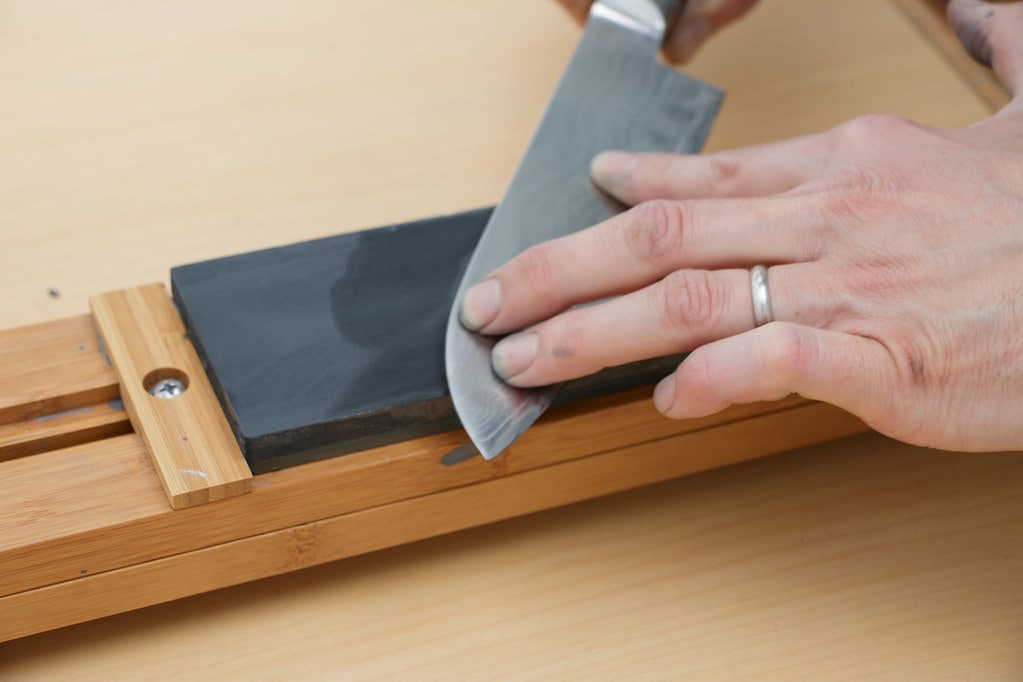A: You can soak it as long as you like, and that will not damage the stone. HOWEVER…. Just remember to leave it out to dry for several days before putting it away and storing it to avoid mold. Even though it may feel dry to the touch, there may still be water inside, especially if you soaked it for a longer time.

Tips on Drying a Whetstone
Sometimes, you may wish to store your whetstone somewhere other than in water. In this case, you’ll need to allow it to dry out before you put it away. But it’s important to remember that you can dry your whetstone too quickly as this can result in irregular drying which can cause
Can You Leave a Whetstone in Water?
Between uses, you might think that it is a good idea to leave the whetstone sitting in water. This way, you won’t have to worry about remembering to soak it before you start your next sharpening job. Whether or not this is appropriate largely depends on the stone. There are some that are perfectly safe to leave in water all the time, while others won’t do as well. For this reason, it is worth looking at the manufacturers instructions to figure out how best to store your stone. Here are some of the problems you might face if you permanently soak a stone that isn’t designed to withstand this type of treatment.
● The stone may degrade in quality. There are some whetstones that are made from materials that won’t hold up well when continually submerged in water. The materials will start to disintegrate and your stone will be rendered useless. This is more typical of synthetic stones than it is natural ones.
● There are some whetstones that may crack when they are left underwater for long periods of time. This usually happens if the water starts to freeze. Perhaps it’s winter or you’ve left the water in a cool place. This will cause water to expand inside the stone which can result in cracking.
● If you leave some stones in water for a long time then there is a risk that mould will develop. This happens especially if the stone is out of use for a long time or if you don’t change the water will the stone is being stored. Not only is this unhygienic but it can also make the stone smell, which is unpleasant.
This isn’t true of all stones which is why we’ll reiterate the importance of checking the manufacturer’s instructions before choosing whether or not to leave your stone in water for a long time. Another thing to consider is how often you use the stone. If it’s something you’re going to use very regularly then it might be OK to leave it constantly soaking, provided you buy a stone that can put up with this. We’d also recommend making sure to perform regular water changes. It can also be useful to add a single drop of dish soap as this will help to keep the water clean and prevent the growth of mould. When it comes to determining whether or not you can soak your whetstone permanently, it really comes down to the quality of the stone and the materials it is made from. You’ll notice that the higher quality whetstones will come with detailed instructions on how to care for the stone whereas cheaper alternatives may not. If you buy one of these stones then you’ll probably find that there is a bit of trial and error involved in figuring out how best to soak and store it.
Whetstone Sharpening Mistakes that Most Beginners Make
FAQ
How long is too long to soak whetstone?
Is it bad to leave a whetstone in water?
Should you soak a 3000 grit whetstone?
Can you ruin a knife with a whetstone?
